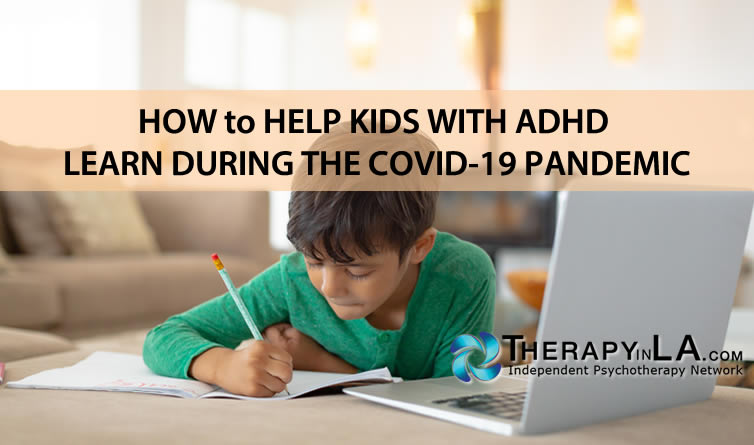HOW to HELP KIDS WITH ADHD LEARN DURING THE COVID-19 PANDEMIC
HOW to HELP KIDS WITH ADHD LEARN DURING THE COVID-19 PANDEMIC
ADHD presents special challenges with school efforts and homework, all the more in the current remote learning programs during the COVID-19 pandemic. Being able to sit still and sustain focused effort is all the more difficult when learning is limited to screen time. Please see previous blogs and articles for some of the basic issues involved. Here are some specific strategies to help (https://www.additudemag.com/hit-the-books-the-add-way/ ):
- Allow, even encourage movement. Holding a book in hand (or a screen) as a child paces can enhance concentration and focus. Placing a book on a shelf and working in rhythm can assist with learning to spell words, one step per letter, or do multiplication problems, one physical step per math step. Extra energy gets discharged this way, without any damage to the learning process. Motor skills become part of the task as well. Learning through multiple channels assists with ADHD and/or learning difficulties. Rhythmic music can introduce such movement.
- Do the work out loud. By reading aloud, auditory processing is added to reading, spelling, writing, or math work, so that it is not only visual or fine motor. Reading aloud can enhance a child’s focus. Paraphrasing material in their own words is one more step in staying engaged and making the material their own. Again, this makes the task one of two or more modalities.
- Small motor movements – “fidget”. Small objects that a child can play with release some of that extra energy and can improve concentration. A small piece of play dough, or a Wickki Stix (string covered in wax that can be shaped into various things), or something kept in a pocket that can be secretly manipulated can allow for this.
- Sit in alternative positions. Sitting still in one position for extended time can be impossible for kids with ADHD. A “sitting disk” can be placed on top of a chair, as a cushion, that allows for – even requires – small adjustments in posture. These small movements again release energy and engage motor skills as part of a learning effort.
- Small increments or “bursts”. When attention wanders on tasks that are not inherently interesting, allow a child to switch to another task. He can then return to the first task after a few minutes, with more sustained concentration for a few more minutes at least. Work in shorter periods.
- “Bursts” can be shifting subjects. Changing to another subject, and then returning to the first subject can help kids sustain their concentration.
All of the above strategies are not consistent with more traditional classroom learning, especially once a child leaves the early elementary years. It may be necessary to consult with your child’s teacher to have their agreement and cooperation so that your child is not punished for these “violations” of classroom protocol. With remote learning, it may mean that the child will leave the screen at times for example, and return, hopefully with more work completed that will satisfy the teacher.
Therapists with IPN are experienced and skilled in developing alternative learning strategies for kids with ADHD and other learning challenges. Consulting with parents and problem solving is one of the ways that counseling sessions can be very helpful.
Dr. Alan M. Solomon is a clinical psychologist in private practice in Torrance, CA. A member of the Independent Psychotherapy Network, he can be reached at 310 539-2772 or dralanms@gmail.com. Telehealth sessions by phone or video are available.
Copyright 2021 by Alan M. Solomon, Ph.D.

